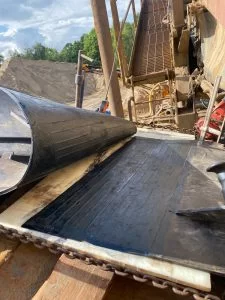Conveyor belts are found in nearly all manufacturing plants, playing a key role in production and material handling. The last thing you want is for them to stop running—unless it’s for scheduled maintenance.
Join us as we explore the importance of regular conveyor belt maintenance, common conveyor system issues, and how to create an effective maintenance plan. Let’s get started.
The Importance of Regular Conveyor Belt Maintenance
Manufacturing plants and warehouses often use various types of conveyor systems to automate the flow of goods, reducing bottlenecks and ensuring smoother operations. While conveyor belts are undeniably crucial, we sometimes take their smooth operation for granted and only address maintenance when something goes wrong.
One of the main reasons for neglecting conveyor belt maintenance is that conveyor systems are designed to run continuously and involve numerous moving parts across large areas. To carry out significant maintenance, the entire system must be stopped, which can result in halting a portion or all of the plant’s operations.
It’s easy to see why maintenance teams hesitate to perform regular servicing.
Unfortunately, this postponement often leads to bigger issues. Small problems build up over time, eventually causing costly breakdowns in the conveyor belts that could have been avoided with timely maintenance.
That’s why it’s essential not to overlook regular conveyor system maintenance. It should be planned and scheduled as part of routine plant operations. This approach minimizes downtime for planned maintenance and reduces the risk of unexpected, prolonged breakdowns in your conveyor belts.





